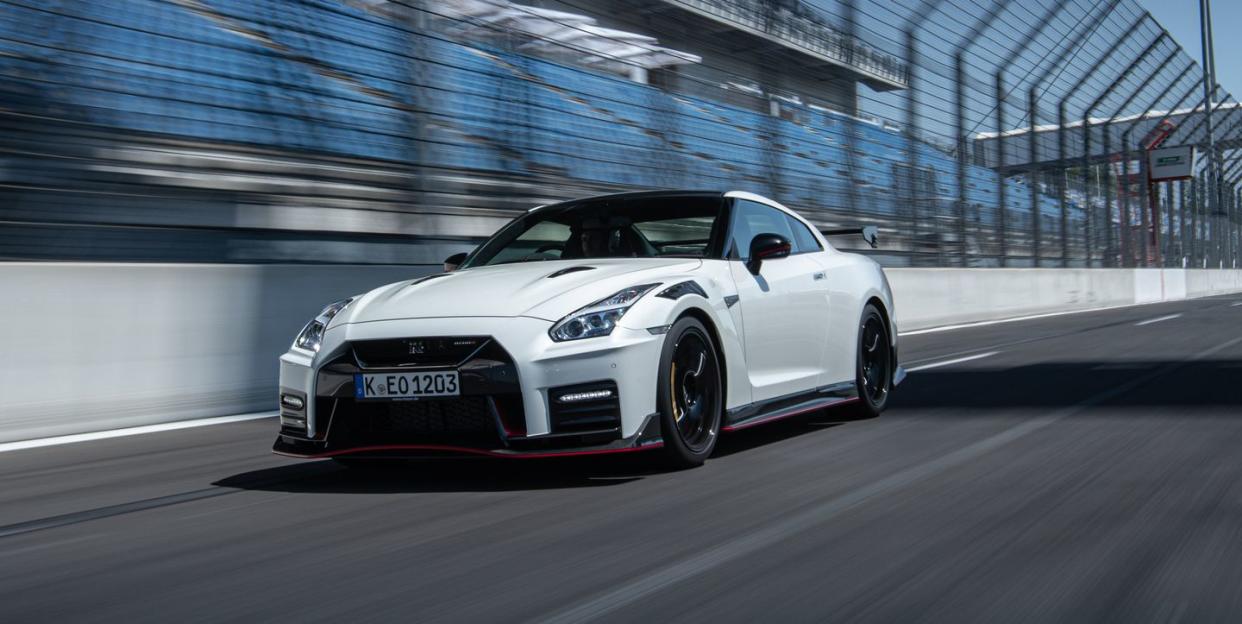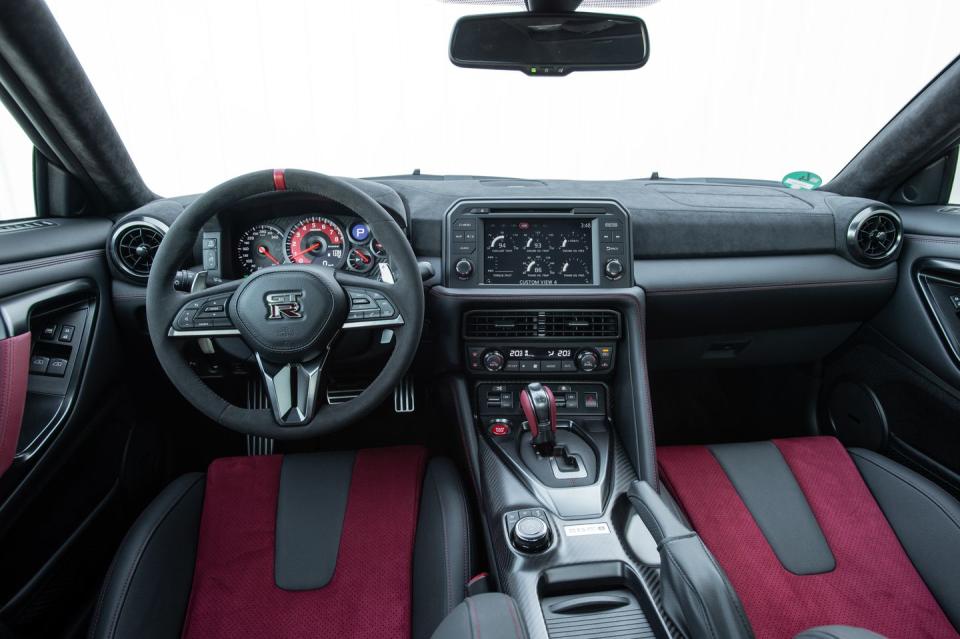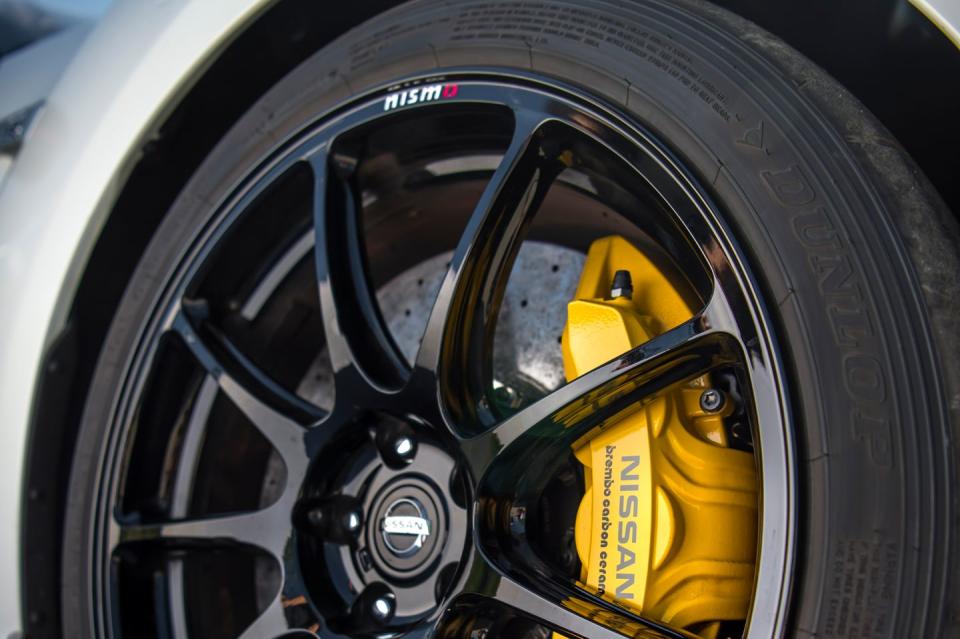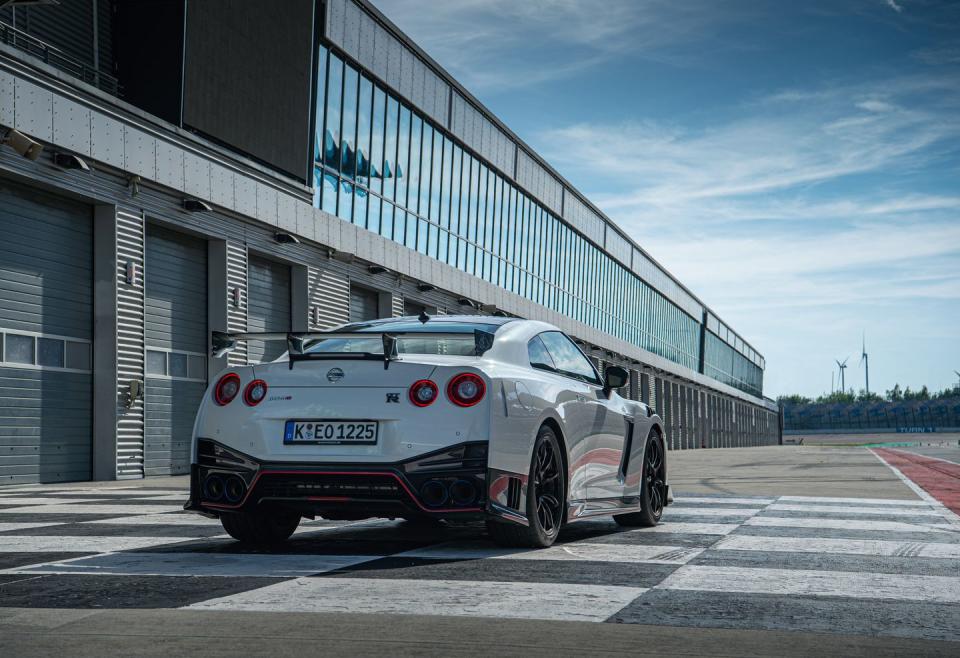2020 Nissan GT-R NISMO Shows Godzilla Is Still Evolving

If you were hoping for an all-new Nissan GT-R, we're sorry to disappoint you. Well, it's really not our fault that this is the same GT-R you've known for a decade. It's been a long 10 years for the GT-R—for all of us, actually. Competitors have caught up, surpassed, and made Nissan's big supercoupe seem like an anachronism. But Nissan hasn't neglected the GT-R. In the interest of keeping it relevant, the company has bestowed incremental powertrain, chassis, and design changes. The 2020 GT-R NISMO is the latest and greatest evolution of the GT-R, aimed more at the track than ever before.
Now, if you were hoping for more power under the hood, there isn't any. Not that the NISMO needed more horsepower, as the twin-turbo 3.8-liter V-6 remains at a seriously engaging 600 horsepower. The turbochargers are new and have the same part numbers as the ones used on Nissan's GT-R GT3-class race car. Chosen for their efficiency and responsiveness, the new turbos help the GT-R's V-6 force you right into the new lighter Recaro seats in which we drove in Europe. These won't be coming stateside; we'll soldier on with the current seats. While you're hurtling down the road, you might notice that the mighty V-6 pulls through only six gears. That's because the gearbox dates back to a time when six ratios were deemed sufficient. At least the shifts are quick, and with launch control initiated, the big coupe hurtles to 60 mph in about 3.0 seconds. The transaxle sounds a bit quieter than before, too. The clunks and whirrs of previous GT-Rs appear to have been exorcised. Switch the transmission to the newly revised R-mode, and it downshifts under braking, holds gears through corners, and generally makes using the paddles superfluous.

Holding this weighty V-6 beast in check are new carbon-ceramic brake rotors. In front, you get 16.1-inch discs pinched by six-piston calipers, while out back there are 15.4-inch rotors with four-piston calipers doing the grabbing. Add up all four, and the new brake system removes 35 pounds of unsprung weight from the GT-R. On track (the EuroSpeedway Lausitz south of Berlin), the brakes took down triple-digit speeds again and again, but the pedal stroke lengthened after a few laps. Some of the long pedal may have been due to the overactive stability-control system working the brakes on track. Switching the stability-control system to the more permissive R-mode used the brakes less, which seemed to keep the brake-pedal pressures consistent.
To help the GT-R change directions with greater ease, a new carbon-fiber hood replaces an aluminum one, and the roof is now carbon fiber for a savings of 13 pounds. The carbon fiber extends to the front fenders, which now have pressure-relieving vents that also contribute a bit of downforce to the nose. Combined, the fenders shed another 10 pounds from the front end.

New tires from Dunlop were developed just for the NISMO and have massive outer tread blocks to help this Godzilla fight its nemesis, understeer. Mothra is another Godzilla nemesis. Measured against today's performance cars where 305-section front tires are now a thing, the GT-R has relatively narrow tires—255/40R-20 in front and 285/35R-20 in the back—but the grip of the new tires didn't make us wish for additional width.
All of these upgrades add up to a riot of a car. But, unless you just looted $212,435 to buy one, the NISMO strikes us as crazy expensive. The price is $35,190 more than last year's NISMO or double the price of the regular GT-R, a car that has 565 horsepower and would definitely scratch nearly anyone's GT-R itch. If you really must have a 600-hp version, the Track model costs only $147,235. Let's not forget that 10 years ago the GT-R started at $70,475. A decade later Nissan wants three times that amount? It seems like a lot of money, and the list of cars we'd rather have for that price is seriously long. The NISMO's many improvements render age only a number, but the number on the window sticker is a different story.

You Might Also Like

